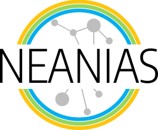NEANIAS Space/Planets working group is working to provide high-level services to otherwise technically bound Planetary image data processing algorithms; the goal is to offer science-level data and common but computer expensive tasks through an intuitive and interactive user interface so a broad community of data scientists, engineers and enthusiasts can benefit from some of the best observational space mission humankind has deployed on Mars and the Moon in the last decades.
In this article we present the steps necessary to produce the image products already available through our services, as well as the interactive actions users can launch for generating custom products.
One of the guidelines of NEANIAS services is to provide FAIR (Findable, Accessible, Interoperable, Reproducible) data. Many are the aspects concerning those properties of a data set, and the discussions addressing them branch different implementations depending on the field of science. Regardless, though, openness and high-level data are key to address the ultimate goal of a data set: to be used as widely as possible so that data can add as much value as possible through the best of its analysis and derived knowledge. Openness is fundamental for it allows unrestricted access and so is fundamental for any unbiased use we may want to make out of it.
The concept of “high-level” of a data product is somewhat abstract – and, again, field-dependent – but we can simplify it for “easy to use”. A JPEG image is an example of a high-level format for representing an image since it has broad support for the visualization of its content in our digital devices. For geographical images such of a high-level format is GeoTIFF, an extension of the well-known TIFF format with geo-location embedded. GeoTIFF can be visualized by virtually any image viewer, capable of rendering TIFF files, and the specific manipulation of the geographical information in it (e.g, re-projection to different cartographic representations) can also be done by many available tools.
For different reasons, though, scientific data archives do not usually provide their data in some high-level data formats but rather data formats that can be handled by a few specific software tools. This is the case for datasets provided by the institutions in front of NASA and ESA missions providing, for instance, Mars and Moon images. One of the reason for the use of unpopular data formats in scientific data archives regards the complexity and volume of information stored in those data sets: as a source of truth, these so called (scientific) source data archives have the duty of providing every and all piece of information captured by the science mission behind it, rendering the data and metadata justly adequate for niche-specific demands.
Here is where NEANIAS comes in: to fill the gap between low-level, niche-specific data products and data processing methods capable of being provided by high-level representations through it services. In particular, the Space-Planets service developed by the Jacobs University Bremen and MEEO remove all the boilerplate necessary for elevating the level of the main Mars and Moon surface observation imagery data provided by NASA and ESA academical institutions to the non-expert user and provide common data analysis tools as a service through the ADAM platform.
